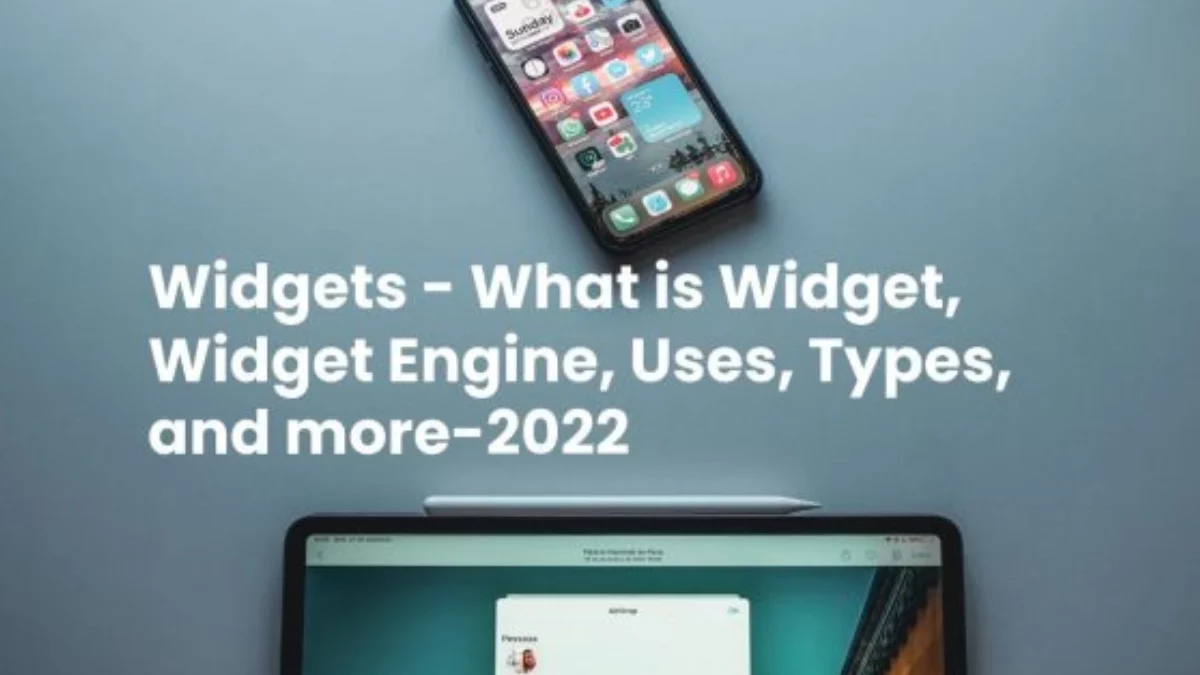Widgets I have already had many occasions to talk to you about widgets, but without really taking the time to explain what they are gadgets.
Table of Contents
What Is A Widget?
Widgets are small autonomous and permanently connected modules that use to repatriate information in real-time (stock market, weather, road traffic, etc.) or to monitor predefined indicators (auction on eBay, etc.).
A widget is a small request or program designed to provide easy access to the most used functions of a device. Their main feature is that they integrate into the desktop of the computer or mobile phone and offer us visual information without running anything else. Widgets are free and can be obtaine through the Internet.
In programming, the period refers to the part of a GUI (graphic user interface) that allows the user to interface with the application and the operating system. Widgets display information and prompt the user to act in various ways. Typical devices include buttons, dialogue boxes, pop-up windows, drop-down menus, icons, scroll bars, resizable window borders, progress indicators, select containers, windows, break menus, menu bars, switches, and forms.
These Widgets are not only found on the web, but it is also possible to find them in operating systems such as Android, iPhone, Windows, etc. Thanks to this, we can add new features to get more out of the different tools.
What is Widget Engine
Widgets Require An Engine ( Widget Engine ), Software That Allows Running These Mini-Applications And Managing Them. There Are Four Types Of Widget Engines:
- engines built into the operating system (such as Apple’s Dashboard or Windows Vista’s gadgets );
- engines in the form of software (this is the case with Yahoo! Widget, Google Desktop, Capsules’ under Linux or even Kip Folio – we are also talking about the future Apollo from Adobe);
- the online engines are
- engines integrated into online services (as for My Space, WordPress or even Dot clear 2).
And since nothing is simple in the IT world, we also have two scenarios where things get complicated
- Opera, which is a browser AND a widget engine;
- engines that share the same widgets (as is the case for Live and Vista and Google Desktop and Google it).
What Is A Widget Used For Background?
Widgets run in the background or superimpose on the software(s) you are using. Particularly useful when you want to keep an eye on a lot of stuff!
There Are Thus Several Types Of Widgets :
- utilities (which give the time, the number of emails in your mailbox, the statistics of use of your mouse, etc.);
- informative (which retrieves the latest news, stock market prices, sports results, etc.);
- transactional (which tracks your auctions on eBay or current promotions at an online merchant);
- comfort (which gives the state of road traffic, moon phases, etc.)
- promotional items (which count down to the release of a film or count the number of albums sold.
In short, you will have understood that we have fun with widgets, and there are thousands of them. I, therefore, recommend that you take a look at widget directories like WidgBox, WidgiPedia, Widgetbox or WidgeToko.
What Impacts Widgets?
It is currently tough to predict whether widgets have a future, but we can nevertheless anticipate two significant impacts :
- a new way of consuming information that risks lowering users’ attention;
- a new way of communicating and promoting offers where brands will have to integrate this new channel of communication/relationship with customers and prospects into their strategy (e.g., a widget in the form of a countdown for the French release of the ‘iPhone).
Widget Types
While There Are Several Types Of Widgets, These Are The Most Well-Known And Used.
- Desktop widgets. They are interactive tools that download to the desktop of the computer. The case with search engines, weather applications, clocks, etc.
- Mobile widgets. Same as above, but adapted to mobile technology. The easiest way to install them is to keep your finger pressed on an area of the screen where there are no icons, and a drop-down will appear with the option of the different widgets.
- Web widgets: The pieces of code that translate into functionality or content programmed from JavaScript, Flash, Silverlight and Windows Media Player.
- Physical widgets. They are compact mechanisms that integrate typical widget functions, such as alarms, weather, etc.

